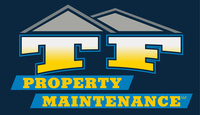
OneSite is a property management software provider that has been around for twenty years. Apart from its own proprietary systems it also works with multiple vendors. OneSite Facilities Plus is the most popular form of it, designed by RealPage. OneSite offers a cost-effective and simple lease management solution for those who fear losing their home.
OneSite is a good choice if you are a property manager in the market for a new platform. While the company has many options, OneSite Facilities Plus is RealPage's flagship product. It was specifically created to serve the needs of property managers as well as maintenance professionals. OneSite is the top property management tool. OneSite boasts a number of great features. OneSite solutions can increase your bottom line, from tenant screening to leasing to improving the property's appearance.
There are a few drawbacks to this software. Although setting up OneSite accounts is simple, supporting and maintaining it is not as easy. The company doesn't offer any support to users. That means users won't be able to expect to receive the same level of customer service as a sales rep. It is also possible to have issues with the interface. This is not surprising considering how old the software is.
OneSite is a flexible property management solution that offers many advantages over other software providers. OneSite is able to be customized to suit the needs of managers and property owners of any size, unlike other property management software providers. This applies to all property management operations, large or small. This software includes many property management tools and is supported by a solid warranty.

Lastly, OneSite has a few other tidbits of information. These include the best way for you to manage your documents, and many features that will allow you to track your tenants. You will find a variety of community tools available, including an online directory that allows you to create and manage your community activities. Besides providing a convenient location for storing a multitude of community-centric information, OneSite also allows users to connect with peers and colleagues in real time.
FAQ
How do I find a trusted handyman?
Before hiring a handyman you should always verify their references. Ask friends and family members who have used him or her in the past. Look online as there are many review sites that allow handymen to post their own reviews.
Is a handyman able to make suggestions on how to improve my house?
Absolutely! True, a handyman can be trained in any area of home repair or maintenance. He or she will know what needs to be done and what won't. Do not hesitate to seek advice whenever you are in need.
Are handymen insured?
Yes! Yes. Insurance companies usually cover liability claims of up to $1,000,000 for bodily injury or property damage. This means that if something goes wrong during the course of the project, your insurance company will generally compensate you for the damages caused.
Is there something I should check before hiring a handyman
Hire someone with experience in the type of project you are looking for. You'll also want to check references and ask about previous customers. You might want to add extra cash to cover unexpected costs. It's important to check that your dog is licensed and insured.
Where do handymen come from?
There are thousands, if not millions of handymen in America. However, most of them never started out as contractors. Most started as a tradesman, typically learning how to do things through apprenticeships. They are often skilled and knowledgeable, making them valuable assets for any company.
Statistics
- “Before the pandemic, 40% of people asked how we could estimate a job when we weren't there,” Rose recalled. (inquirer.com)
- Our handyman services for seniors are provided by professional senior helpers who have been serving the community for over 20 years with 98% customer satisfaction. (cantatahomeservices.org)
- Another estimate was that the market in the United States was $126 billion and was increasing by about 4% annually. (en.wikipedia.org)
- According to the U.S. Bureau of Labor Statistics, in May 2020, there are 1,357,630 handymen employed in the U.S.. (angi.com)
- “Once the pandemic hit, that number fell to about 20%.” (inquirer.com)
External Links
How To
How to Replacing a Broken Tile
Step 1: Remove the old tiles.
Take out the tiles and place them on a new flooring surface. If you plan to use these tiles later, it is important that you keep them in good condition. You can note the parts that are missing or damaged so that you can find replacements.
Step 2 - Select New Tiles
Check out these options for tile replacement.
-
Find a new tile that's similar to the one you removed.
-
To find the matching piece, use the measurements that you took while removing the tile. This allows you to easily find the perfect size without needing to measure again.
-
You should look for different colors, patterns and textures.
-
Consider which grout you would like to use, if any. Some prefer a solid color, while others like mixing it up.
-
You should ensure that the tile you choose is resistant to moisture.
-
Also, think about where you want to place your new tile. This will help you save time and money.
-
Once you've picked your tile, place an order online or call your local Lowe's location to place it.
Step 3: Install the tiles.
Use the same method as before to install your new tiles. Be careful to align them properly so they fit together perfectly.
Step 4 - Clean up
Make sure to clean up all debris and other materials before applying the final layer of protection material.
This will prevent dirt or dust from collecting between the tiles and causing mold.
Step 5 -- Sand the Floor
After cleaning, sand the floors to remove any particles.
Step 6 -- Finish Off
Once the floor is smooth, apply the protective coatings. It's important to wait until this point because wet paint can stain the surface of the new tiles.
You can always use a "damp and dry" product on your floors to protect them from staining.
It will not address all problems that may arise once your tiles have been installed. For example, if you have a lot of kids running around, you may want to consider using an anti-slip coating on top of the protective layer.
Finally, don't forget to keep your protective sealer in place for several weeks before moving into your new home.